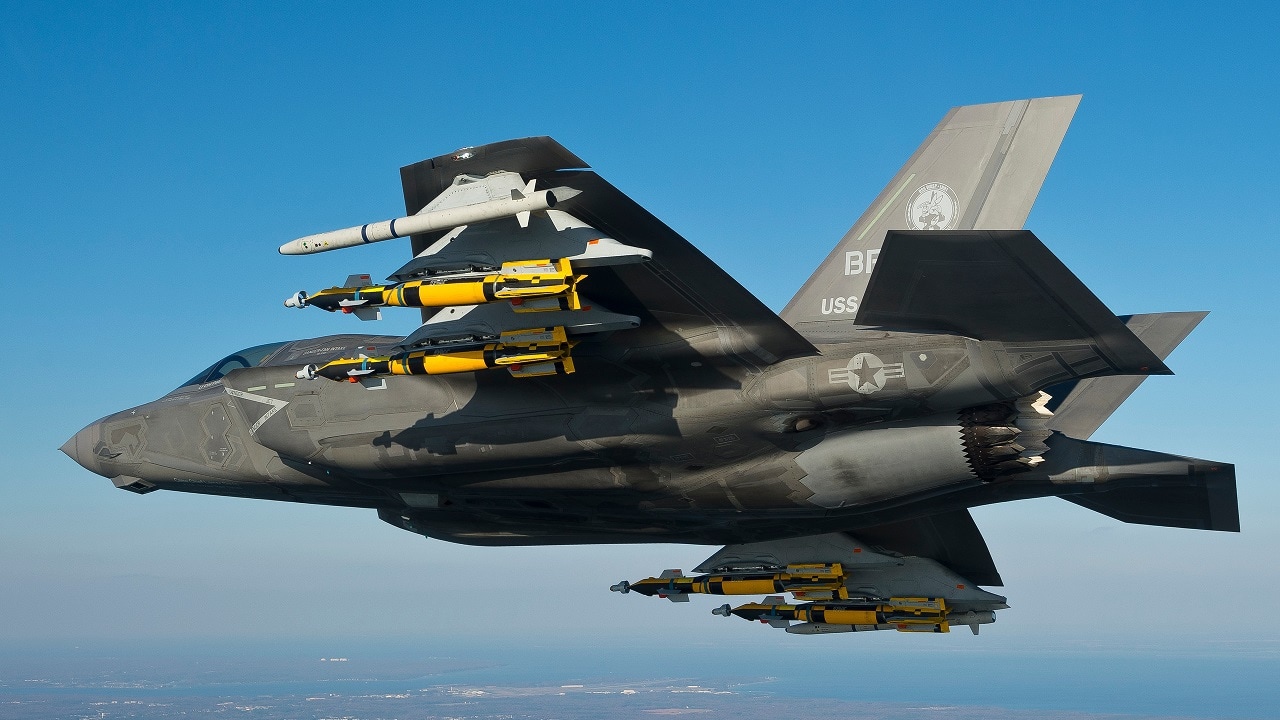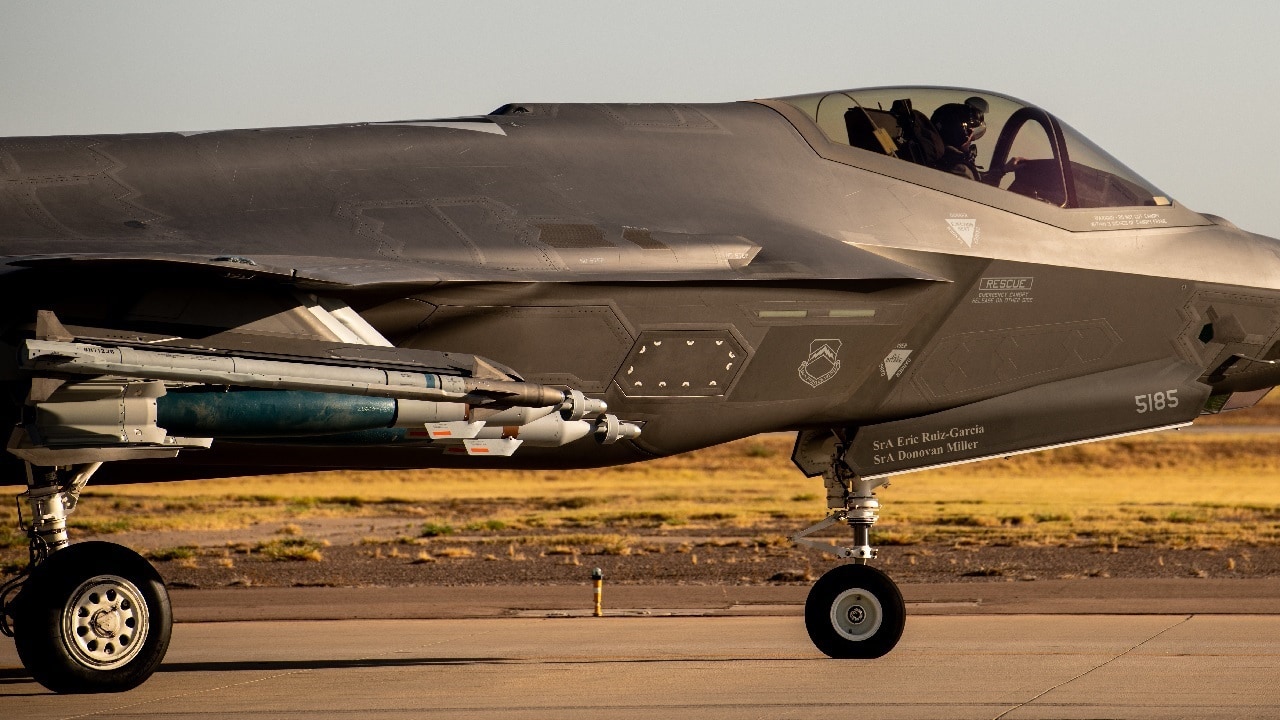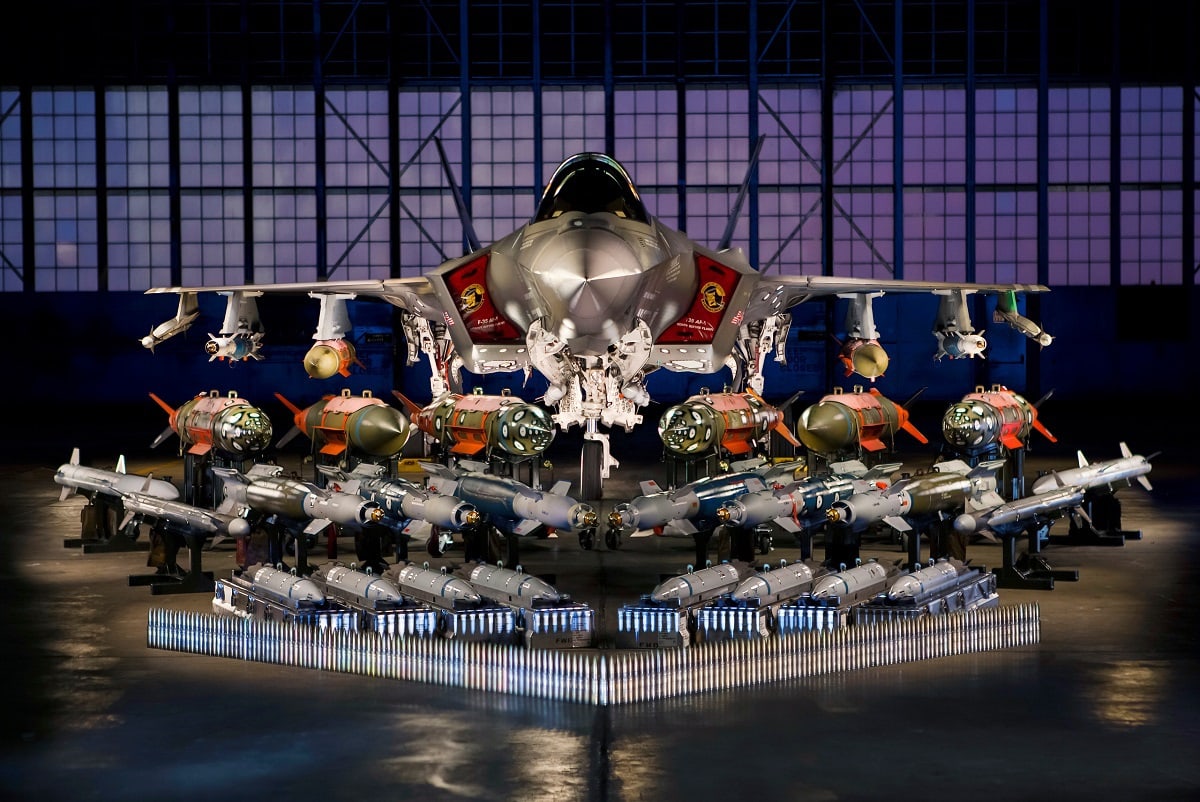Article Summary: The F-35 Lightning II is famous for its stealth and advanced sensors, but in “Beast Mode,” it sheds its stealth profile for maximum firepower. Outfitted with external weapons, the F-35 can carry six 500-pound bombs, air-to-air missiles, and more—extending its strike capability in non-contested airspace.
Key Point #1 – While this increases radar visibility, the F-35 still has a major advantage with its cutting-edge targeting, networking, and reconnaissance systems.
Key Point #2 – Future software upgrades will expand its weapons arsenal, making it even deadlier. Learn why the F-35’s Beast Mode is a game-changer in modern air combat.
F-35 ‘Beast Mode’: How This Stealth Jet Transforms Into a Bomb-Laden Powerhouse
The F-35 is regarded as a “flying computer.” It has become known for its stealth, sensing, and high-speed data processing – and for destroying groups of fourth-generation fighters from standoff ranges in U.S. Air Force wargames.
However, while highly regarded for its stealth, drone-like reconnaissance abilities and long-range, high-fidelity sensing, the aircraft can also operate in a heavily armed, less stealthy “beast mode” capacity.
The F-35 operates with a sleek, smoothed-over internal weapons bay as part of its stealth configuration. But a fully armed F-35 aircraft can carry a number of bombs, including as many as six inert 500-pound GBU-12 laser-guided bombs, as well as air-to-air missiles. .
Non-Stealthy F-35
Loading up external hardpoints with weapons would of course increase the F-35’s radar signature. Weapons beneath the wings could present shapes and contours more likely to generate a return rendering to ground-based air defenses.
More edges and protruding structures provide more area and contrast for electromagnetic “pings” to detect the shape, size, and speed of an object.
Therefore, if it is less stealthy and potentially more vulnerable, what is the rationale for adding a fully armed F-35 to a conflict scenario in which many bombs and missiles could be used instead by fourth-generation aircraft or large bombers such as the B-52?
More specifically, if the United States were operating with air superiority in a less-contested area, stealth would be a less critical attribute. The question then becomes, what value would the F-35 bring to an air-attack campaign?
Advantage of F-35 Beast Mode
There are many variables to consider here, the first of which relates to ordnance and dwell time. A more fully armed attack aircraft of any kind is positioned to extend the duration of its bombing missions by virtue of being able to drop more ordnance and adjust as new targets emerge.
The most significant areas of F-35 contribution, however, would likely relate to its computing, sensing, networking, targeting, and reconnaissance advantages.
The range and fidelity of the F-35’s high-resolution distributed aperture system and electro-optical targeting systems would be well positioned to identify targets and task them to other air platforms, drones, or nodes throughout a battlespace.

F-35 Joint Strike Fighter. Image Credit: Lockheed Martin.
With the securely established Multi-Function Advanced Data Link connecting all F-35s, formations of the fifth-generation fighter could form a protective surveillance web in position to track targets, share information, or drop ordnance as needed.
This would provide a distinct advantage to other air assets that are less equipped to process, organize, and transmit threat data in real time. A key aspect of this relates to F-35 computing abilities and what is known as “sensor fusion.”
The onboard computing can gather, organize, and present information from otherwise disparate pools of incoming sensor data. This would prove quite useful in any kind of coordinated air campaign. The F-35 could almost operate in a forward-air type of command-and-control capacity to conduct surveillance, share time-sensitive data across a network, and attack with bombs as needed.

An F-35A Lightning II taxis down the flightline in a Beast Mode weapons configuration July 22, 2020, at Luke Air Force Base, Ariz. The weapons configuration consists of six inert GBU-12 bombs, four mounted onto the wings and two loaded into the weapons bay, as well as an AIM-9X air-to-air training missile. The Beast Mode weapons configuration provides F-35 B-Course student pilots with the additional training and experience needed for potential combat sorties and helps train the world’s greatest F-35 pilots and combat ready Airmen. (U.S. Air Force photo by Staff Sgt. Alexander Cook)
Yet another part of the F-35 beast mode relates to future software upgrades designed to improve capabilities and, in many cases, expand the aircraft’s weapons envelope.
Software upgrades will allow the F-35 to continuously integrate new weapons as they become available. This means that F-35’s beast mode could expand in coming years and possibly integrate weapons that do not yet exist.
Thus far, software upgrades have already enabled the F-35 to accommodate a new generation of weapons, such as the Stormbreaker, a next-generation air-launched weapon now operational on the F-35. The Stormbreaker uses a first-of-its-kind tri-mode seeker to track targets at ranges up to 40 nautical miles in all weather conditions.

F-35 Joint Strike Fighter in What Is Called Beast Mode. Image Credit: Lockheed Martin.
About the Author: Kris Osborn
Kris Osborn is the Military Technology Editor of 19FortyFive and President of Warrior Maven – Center for Military Modernization. Osborn previously served at the Pentagon as a highly qualified expert in the Office of the Assistant Secretary of the Army—Acquisition, Logistics & Technology. Osborn has also worked as an anchor and on-air military specialist at national TV networks. He has appeared as a guest military expert on Fox News, MSNBC, The Military Channel, and The History Channel. He also has a Masters Degree in Comparative Literature from Columbia University

